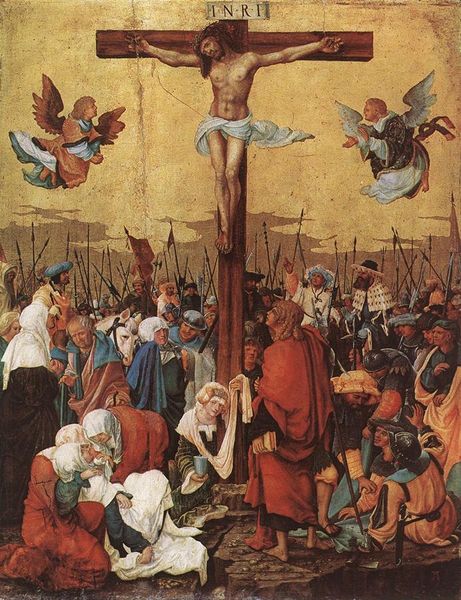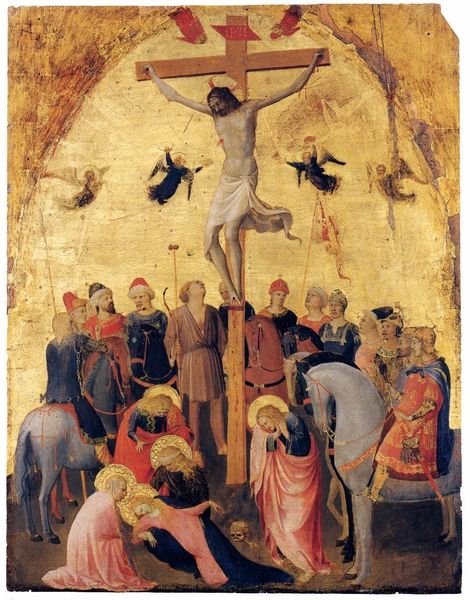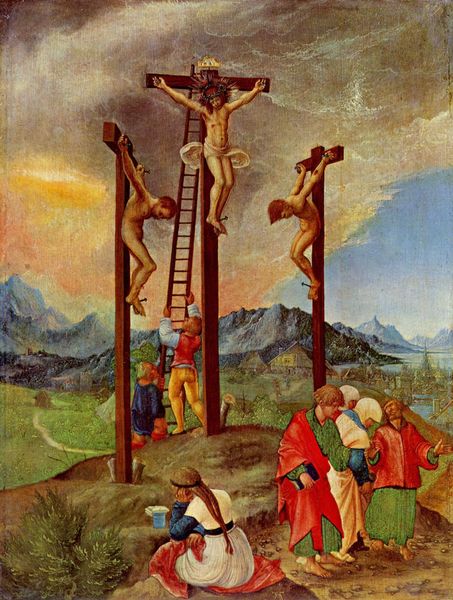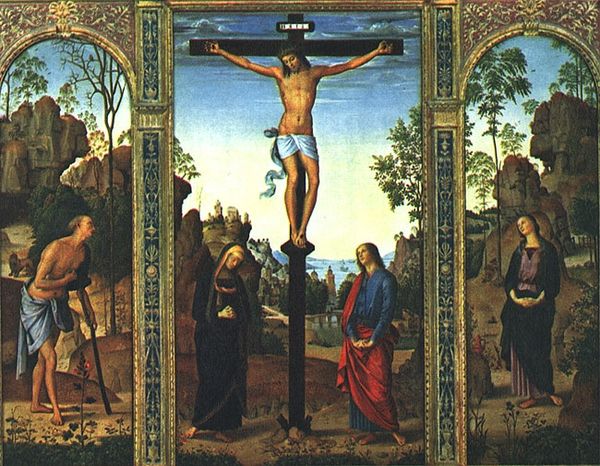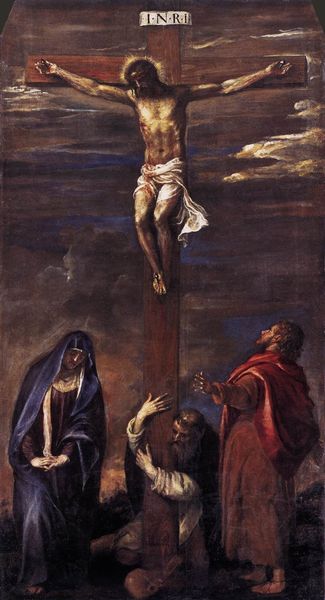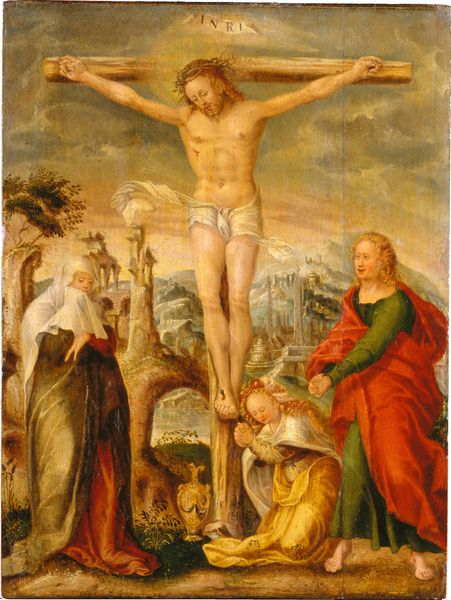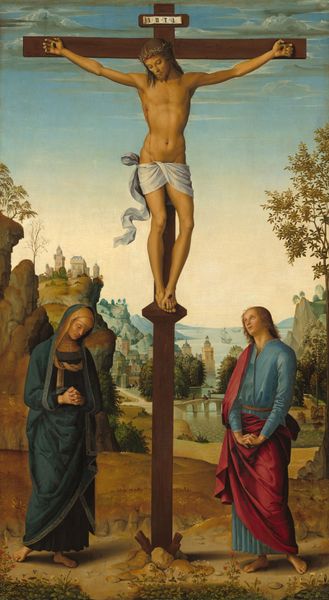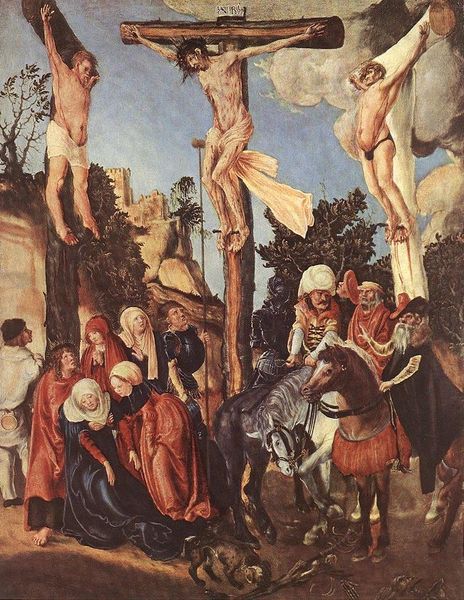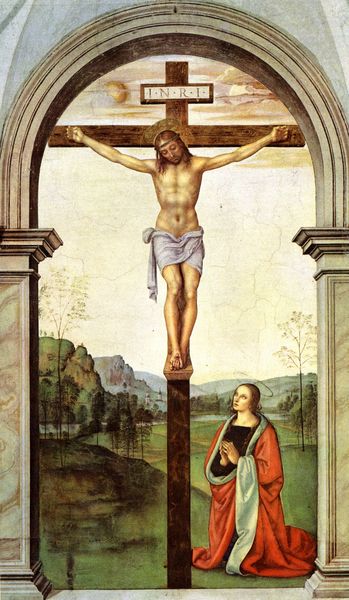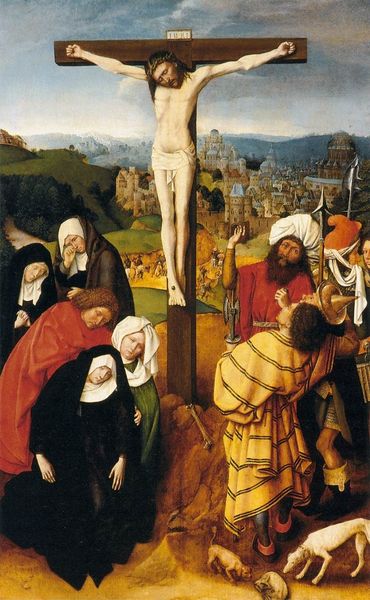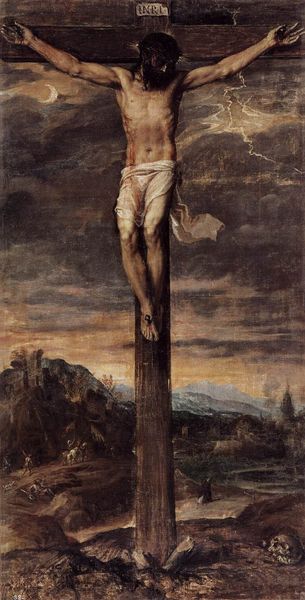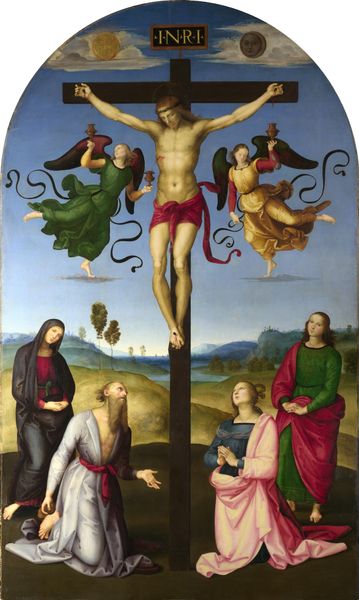
painting, oil-paint
#
portrait
#
painting
#
oil-paint
#
figuration
#
oil painting
#
christianity
#
mythology
#
crucifixion
#
history-painting
#
northern-renaissance
#
portrait art
#
christ
Dimensions: 121 x 62 cm
Copyright: Public domain
Curator: What strikes me immediately is the verticality, that stark line bisecting the canvas from top to bottom, and then the billowing fabric defying gravity around the crucified figure. Editor: Indeed. What we’re looking at here is “Crucifixion” by Jan Provoost, created around 1500. You can find this oil-on-panel work in the Groeningemuseum in Bruges. It exemplifies painting during the Northern Renaissance. Curator: That floating cloth has an uncanny quality to it; almost like the spirit leaving the body. And the expressions, look at those downturned mouths, eyes cast in shadow. There's a weight of despair embodied there. The colors, too—those muted blues, reds, and browns—they reinforce a somber mood. Editor: Note how Provoost employs very traditional Christian iconography to communicate complex emotional states. Mary Magdalene is shown in penitence at Christ's feet, expressing repentance. The weeping women echo established tropes of mourning seen across centuries. And even that stormy background acts almost as a symbolic premonition of both the death and resurrection, with that strange play of dark and light. Curator: And look at the placement of the figures; the diagonal groupings frame the scene, creating a powerful visual tension between Christ above and his followers mourning below. It’s as though their grief grounds him even as he ascends. Editor: Precisely! Semiotically, the landscape also conveys particular symbolic associations relevant to the cultural context. The rocky outcrops can represent the hardness of the world and its resistance to the spiritual message, but in general, Provoost uses these elements to elevate the pathos of sacrifice. Curator: Seeing it this way illuminates something new each time. From sorrowful iconography to spatial dynamics to a sophisticated use of painterly semiotics. Editor: It's amazing how much these painters infused every component of the composition with deeper allegorical meaning, which helps preserve continuity within a belief system. It has staying power.
Comments
No comments
Be the first to comment and join the conversation on the ultimate creative platform.
